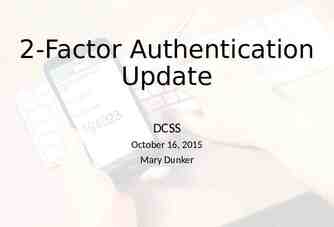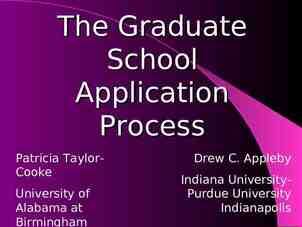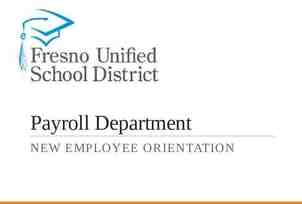Knowledge Management July 28th, 2011
41 Slides1.49 MB
Knowledge Management July 28th, 2011
Administration Quiz today Tomorrow a fun activity Go over ER Diagram and Relational Schema Coming to the end of our “data” module of this course with today’s lecture on “knowledge management”
Learning Objectives Create an ER Diagram and Relational Database Schema (Recap) Describe at a high-level how you turn a relational database schema into a working database Define Knowledge Compare and contrast explicit knowledge and tacit knowledge Define Knowledge Management Systems (KMS) Outline the Knowledge Management Cycle
Assignment 3 Recap ER Diagram and Relational Database Schema Repetition, repletion, repletion leads to learning Average 79.79% High: 98% Rebuttal Process
UserId UserName Users UserEmail [1:1] AnimalId [1:1] Animal HomeAddre ss [0:M] [1:M] Pictures [0:M] [1:1] [1:M] [0:M] FarmName [0:1] Virtual Land Parcel
UserId UserName Users UserEmail [1:1] AnimalId [1:1] Animal HomeAddre ss [0:M] [1:M] Pictures [0:M] [1:1] [1:M] [0:M] FarmName [0:1] Virtual Land Parcel
Relational Database Schema 1. Strong Entity Classes Users (UserId, Username, UserEmail, HomeAddress) Animal(AnimalId, Species, CommonName) Pictures(PictureId, Description, Picture, ) Virtual Land Parcel(LandId, Size, Terrain) 2. Weak Entity Classes Pet(UserId, AnimalId, Birthday, PetName) FK: UserId references Users FK: AnimalId references Animal
UserId UserName Users UserEmail [1:1] AnimalId [1:1] Animal HomeAddre ss [0:M] [1:M] Pictures [0:M] [1:1] [1:M] [0:M] FarmName [0:1] Virtual Land Parcel
Relational Database Schema Aggregate Classes 3. Farm(FarmId, FarmName, FormationDate, LandId) FK: LandId references Virtual Land Parcel One-to-many relationships 4. Farm and Land (see relationship above)
UserId UserName Users UserEmail [1:1] AnimalId [1:1] Animal HomeAddre ss [0:M] [1:M] Pictures [0:M] [1:1] [1:M] [0:M] FarmName [0:1] Virtual Land Parcel
Relational Database Schema 5. Many-to-Many relationships Picture Pet(PictureId, UserId, AnimalId, Birthday, PetName) FK: PictureId references Pictures FK: UserId, AnimalId, Birthday, PetName references Pet Farm Pet(FarmId, UserId, AnimalId, Birthday, PetName) FK: FarmId references Farm FK: UserId, AnimalId, Birthday, PetName references Pet
Users (UserId, Username, UserEmail, HomeAddress) Animal(AnimalId, Species, CommonName) Pictures(PictureId, Description, Picture, ) Virtual Land Parcel(LandId, Size, Terrain) Pet(UserId, AnimalId, Birthday, PetName) FK: UserId references Users FK: AnimalId references Animal Picture Pet(PictureId, UserId, AnimalId, Birthday, PetName) FK: PictureId references Pictures FK: UserId, AnimalId, Birthday, PetName references Pet Farm(FarmId, FarmName, FormationDate, LandId) FK: LandId references Virtual Land Parcel Farm Pet(FarmId, UserId, AnimalId, Birthday, PetName) FK: FarmId references Farm FK: UserId, AnimalId, Birthday, PetName references Pet
Questions?
Great, I have a relational database schema . What next? We need to communicate the relational database schema to a database application on a computer.
How do we do that SQL http://www.w3school s.com/sql/ Structured Query Language a database computer declarative language designed for managing data in relational database management systems
First, Choose a Database and Install It
Configuring Set password Security Ports Management preferences
Second, Create a Database CREATE DATABASE animal lingo https://p3nlmysqladm001.secureserver.net/grid50 /1529/index.php?uniqueDnsEntry testmis111.db. 7217657.hostedresource.com security
Third, convert relational table to SQL and execute http://www.w3schools.com/sql/
Some examples: Users (UserId, Username, UserEmail, HomeAddress) CREATE TABLE users ( userId char(40) not null primary key, username varchar(50), userEmail varchar(100), homeAddress varchar(255) );
Another example: Pet(UserId, AnimalId, Birthday, PetName) FK: UserId references Users FK: AnimalId references Animal CREATE TABLE pet( userId CHAR(40) NOT NULL, animalId CHAR(40) NOT NULL, birthday DATE NOT NULL, petName VARCHAR(255) NOT NULL, PRIMARY KEY (userId, animalId, birthday, petname, FOREIGN KEY (userId) REFERENCES users (userId), FOREIGN KEY (animalId) REFERENCES animals (animalId) );
You end up with a big script CREATE TABLE users ( userId char(40) not null primary key, username varchar(50), userEmail varchar(100), homeAddress varchar(255) ); CREATE TABLE pet( userId CHAR(40) NOT NULL, animalId CHAR(40) NOT NULL, birthday DATE NOT NULL, petName VARCHAR(255) NOT NULL, PRIMARY KEY (userId, animalId, birthday, petname, FOREIGN KEY (userId) REFERENCES users (userId), FOREIGN KEY (animalId) REFERENCES animals (animalId) );
Finally, you can insert, updated, delete, and view data in your program
Data Access (Almost) All programming languages allow you to connect to a database For example INSERT INTO users VALUES (‘11111’, ‘jeff’, ‘[email protected]’, ‘catalina hwy’); Creates a new record Select * from users Returns ALL attributes for ALL users Select username from users where userId ‘afweo23214e’ Returns username for this specific user
You can do a lot of stuff whole classes are dedicated to this http://www.w3schools.com/sql/
Knowledge Management
Knowledge Management A process that helps organizations manipulate information knowledge that is part of the organization’s memory, usually in an unstructured format Should be able to exchange this form of capital among people to be successful.
Knowledge Information that is contextual, relevant, and actionable. Knowledge is information in action. Intellectual captial
Data Information Bulletin listing all the You schedule courses offered by your university during one semester Knowledge Awareness of your schedule, your major, your desired social schedule, and characteristics of different faculty members is knowledge, because it can effect the way you build your schedule
Two types of knowledge Explicit Knowledge Tacit Knowledge
Explicit Knowledge Deals with more objective, rational, and technical knowledge For example: Policies procedural guides Reports Products Strategies Goals core competencies of the enterprise IT infrastructure
Tacit Knowledge The cumulative store of subjective or experiential learning. For example, Experience Insights Expertise Know-how Trade secrets Skill sets Understanding Learning
You try: Preparing a income statement Capturing the attention of a group Changing a hard drive in a computer Publishing an article to the company Web site Designing a new IT infrastructure Setting the strategic direction of a company Gaining a new client Logging hours
Knowledge Management System Refer to the use of modern information technologies—the Internet, intranets, extranets, Lotus notes, data warehouses—to systematize, enhance, and expedite intrafirm and interfirm knowledge management
For example Wikis Training manuals Document repositories Databases Social networks Knowledge Management Software
Which is harder to capture? Explicit Knowledge or Tacit Knowledge
Why is knowledge hard to capture?
How would you build a system or process to address these problems? What do you think a knowledge management system should look like?
Credits: Rainer and Cegielski 3rd Edition, “Introduction to Information Systems— Supporting and Transforming Business”
Questions about Quiz?
Quiz Closed book, closed neighbor Good luck!














































